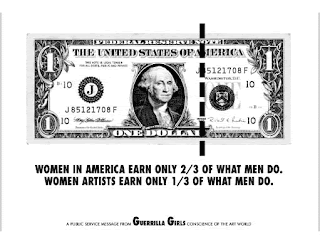Public Water Closet
Modified portable toilet, Urban Textures Urbain, Gallery 101, Ottawa and off/site, Mercer Union, Toronto), 1998
 Public water closet (PWC) diverts the basic function of the two-way mirror, which is to provide systems of power a safe location from which to survey a population to be controlled. In PWC this hierarchy is reversed, so that people living and working on the street, are allowed a location from which to watch the city without being seen. The project proposes an alternative relation between individuals and municipal infrastructure, which is increasingly being designed and constructed as one part of a paranoid fantasy of coercion.
Public water closet (PWC) diverts the basic function of the two-way mirror, which is to provide systems of power a safe location from which to survey a population to be controlled. In PWC this hierarchy is reversed, so that people living and working on the street, are allowed a location from which to watch the city without being seen. The project proposes an alternative relation between individuals and municipal infrastructure, which is increasingly being designed and constructed as one part of a paranoid fantasy of coercion.
Detroit’s underdevelopment: separation > divesture > erasure > encampment

It’s not a bad city; it’s a horribly designed city.
Derrick May, Transmat Records
Link to image
Evicted May 1, 2000 (9 Hanna Ave.)

13 colour Cibachrome contact prints, 20” x 24”, 2001
A camera is a small room into which light enters through an aperture. These photographs are made using a pinhole camera that is a scale model of the room it is intended to photograph. Five of its six interior surfaces are lined with film, each one capturing a different surface of the room. The camera itself is fixed to the ceiling so that the room can be described in its totality. These images are part of a thirteen image series documenting workspaces in a former munitions plant. These spaces were cheap to rent, generous in volume, well lit and easy to adapt.
Model for a Public Space

Plywood construction, Mercer Union, Toronto 2000, Architecture Gallery, University of Manitoba, Winnipeg 1999Model for a Public Space responds to my experience with non-hierarchical meeting forms at Toronto’s Anarchist Free School. In its classes ideas were discussed, and decisions were made by consensus between individuals talking together with one another in a circle. The space is constructed by cutting the floor of a room and peeling it upwards, so that it forms a set of bleachers. People sitting across from one another are physically close, creating intimacy between them. The model sets up hierarchies and then destabilizes them. At the top you are on the periphery; in the centre, people sit above and behind you.
Link to image
Adrian Blackwell
Adrian Blackwell is an artist and an architect. His interest is in public space and architectural planning. He is influenced by the Situationist Guy Debord and wants to change the landscape of urban planning by producing alternatives to our existent public spaces and living spaces. His work is about the dichotomy of public and private space. One of his most interesting works about this issue is his sculptural installation piece called Public Watercloset. What is most interesting about this work is that it is a space that is both public and private. The installation works as a public washroom in which any citizen is authorized to use, yet the space is somewhat private as well. You are situated by yourself, in a private moment inside the installation. What makes it even more interesting and also confusing is the use of the two way mirror. While you are inside the installation you are able to view the public space that is just outside the door, while people on the outside only see a reflection of themselves. Not only is Adrian Blackwell raising interesting questions about public and private space with PWC, but he also raises interesting questions about voyeurism and scopophilia
Adrian Blackwell creates artworks or pieces of architecture that allow the audience to get involved. He say that he is “interested in finding ways to get people involved in my artwork rather than standing aloof from it.” Many of his pieces can be seen outside of a gallery setting which is what allows the viewers to easily interact, and engage in his work. Adrian Blackwell, in my opinion, is considered an activist because instead of simply raising awareness about political/architectural/or environmental issues, he is actually solving the issues at the same time. His artwork is about providing a solution to the problems he sees in urban public spaces.
LauraVideo From Nuit Blanche 2006: A Model for Public Space











